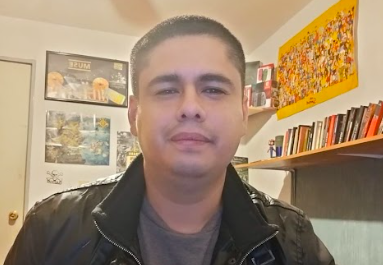
4 minute read
Neo-Geek
Art and technology: allies who cannot antagonize each other
Recently the internet went crazy with the reach of artificial intelligence; many people feel that we are closer to Futurama than ever. In various social networks, apps and pages went viral in which, through an AI, photos could be converted into creative designs of various types, from anime to images that seemed taken from a video game.
Advertisement
The issue generated controversy since people within graphic design argued that the abuse of this, or at least stopping using it in a merely playful way, that is, that people began to use it to create designs for professional or business purposes, could create a labor crisis for them. This discussion is not new, it has happened in music with autotune in singers since it is a tool with which (according to many defenders of singing) anyone can make an album even if they sing badly.

Courtesy: Photononic
The question before all this is, then, is technology seriously so inimical to art and creative minds? Is true art only that which is made as a craft, bordering on the artisanal? If there is technology, does it cease to be art? Given all this controversy that can make us fall into a very deep philosophical conflict, my opinion is that not to all those questions. There is technology that is a great ally of art and here I will show some gadgets that, well applied, can make music, design or architecture a more complete, aesthetic, and just as creative work as if the pure magic of the hands were used.
Music and dance are two artistic activities that invariably go hand in hand, and the Phonotonic is designed so that instead of creating a dance with music, music is composed with dance. These sensors are linked to any smart device in which music will be created, with your movements.
On the other hand, we have the Misa Digital Kitara, an electric guitar that, instead of strings, has a touch screen and touch sensors on the handle. The possibility of effects, audio editing, and production with this guitar are enough for a creative mind to fly like never before with an ordinary guitar.

Courtesy: Misa Digital Kitara
Finally, I will talk about art which is perhaps mo-re complex because of its brotherhood with disci-plines such as engineering: architecture. The Structure Sensor Pro is a camera that serves as a 3-dimensional sensor. It connects to a tablet or laptop and scans from a room to an entire building.

Courtesy: Structure Sensor Pro
This product is ideal for space remodeling or interior design, however, such technology was originally built for health care. According to the developers, the device was designed to be an auxiliary in demanding healthcare environments. With precision textured 3D scanning and industrial-grade calibration capability, this device serves both to generate accurate images of the human body and to perfectly map a real estate structure. Thus, technology proves to be an ally that can be very close to art. The artist will never be at risk if he approaches the right technology, to print better and better what no AI can ever do: the personal stamp, the emotions, and the care that can be given to a creative product. Technology is also available for a more precise feeling.

Mauro Orozco Moreno
Communicator and Historian from the University of Guadalajara. Dedicated to journalism and content creation about technology, geek culture and video games on the internet.










